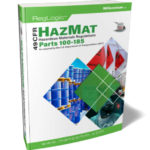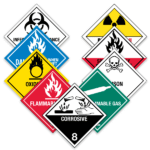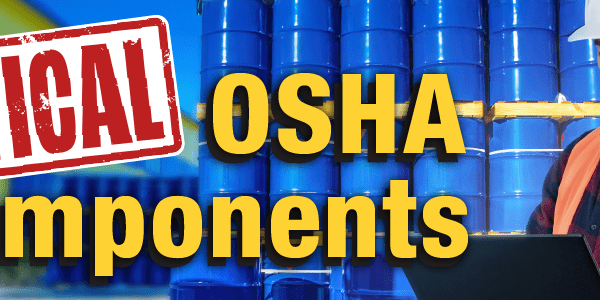 NTSB Issues Report on East Palestine Derailment
NTSB Issues Report on East Palestine Derailment
The National Transportation Safety Board (NTSB) has issued their findings on the East Palestine train derailment that happened on February 3, 2023. The primary cause of the fiery crash was a defective wheel bearing. But other issues and decisions may have contributed to making the accident worse.
What Happened in East Palestine
The NTSB determined that during the trip, a wheel bearing on one of the tank cars overheated. This caused the axle to separate, derailing the train. Unfortunately, it also led to the puncture of a tank car containing flammable liquids. This car met a fairly low standard for strength, rated as a DOT-111 specification. The tanker started to leak, releasing a flammable liquid that rapidly caught on fire.
The spilled liquid wasn’t the biggest concern, however. The heat began to affect five other tank cars that contained a chemical called vinyl chloride. This chemical is not just flammable and toxic to people and the environment, but can, when overheated, undergo a chemical reaction called polymerization. This can result in a potentially explosive build-up of pressure inside the tank car.
Therefore, a decision was made to “vent and burn” – the cars were punctured to release the chemical, which was ignited outside the car to destroy as much of the vinyl chloride as possible. However, this resulted in the vinyl chloride that was incompletely burned being spread throughout the area. Byproducts of the combustion of the chemical, such as phosgene (a poison gas) and dioxins (persistent carcinogens) were created and entered the environment, increasing the hazard.
While there were no immediate human fatalities due to the release, many inhabitants reported significant symptoms. Many animals (including pets) in the region died shortly after the release. And of course, the long-term effects are still to be fully determined.
What Were the Causes of the Incident?
Defective bearings called “hot boxes” have been known for decades as a cause of train accidents. Methods have been developed to monitor them and prevent them from leading to derailments. However, this didn’t work in East Palestine. According to the NTSB, “[a] hot bearing detector traversed by train 32N detected an elevated temperature on the overheating bearing, but the low priority alert it transmitted to railroad personnel did not reflect the true condition of the failing bearing.” This led to a failure in stopping the train to address the problem in time.
Also, the type of rail cars used, while meeting legal standards, were the bare minimum required. Stronger tank cars than the DOT-111 might have prevented the initial release and fire and avoided the disaster.
Other problems were noted regarding the emergency response. For example, according to the NTSB:
- The state of Ohio’s laws regarding volunteer firefighter training were not sufficient to support a safe emergency response to the derailment.
- The emergency response lacked efficient coordination because the responding agencies did not have common radio channels.
- The fire rendered the placards on cars illegible, hindering responders from identifying their contents.
- There was a delay in transmitting train consist information to emergency responders. This increased responders’ and the public’s exposure to the released chemicals.
Finally, a major finding was that the “vent and burn” that released so much toxic material into the environment was possibly not necessary. The NTSB noted “[o]n-scene temperature trends did not indicate that a polymerization reaction was occurring and post-accident examinations confirmed this. The vent and burn procedure was not necessary to prevent a polymerization induced explosion.” The decision to vent and burn appears to have been based on poor communication of information to responders during the event (that is, that no hazardous polymerization was ongoing in the tank), and outdated emergency response guides that overstated the appropriate response.
What Did the NTSB Recommend?
The NTSB Final Report included 34 recommendations. These include:
- Development and implementation of improved methods of detecting defective wheel bearings (“hot boxes”).
- The main source of emergency response guidance in the incident, The Chlorine Institute’s Pamphlet 171, should be updated to reflect current knowledge about the risk of hazardous polymerization of vinyl chloride.
- A system whereby the train “consist” (documentation) be immediately provided to first responders by electronic means in case of accidents. Even before the report was issued, the Pipelines and Hazardous Materials Safety Administration (PHMSA) had published a final rule, HM-263, to this effect in the “Hazardous Materials Regulations” of Title 49, Code of Federal Regulations (49 CFR). These consists should be immediately provided to the assigned incident commander and all appropriate response agencies and departments.
- PHSMA should “[o]btain the necessary legislative authority and accelerate the deadline for removing specification DOT-111 tank cars from flammable liquids service.”
- The Federal Railway Administration (FRA) should install on-board recorders “capable of providing recordings to verify that train crew actions are in accordance with rules and procedures that are essential to safety as well as train conditions.”
- The State of Ohio should amend its firefighter training statute and revise its volunteer firefighter certification standards to meet the NFPA 1010 standard for professional firefighters.
- New placard specifications should be created to ensure their legibility remains as long as possible even in fires.
- Lessons from the East Palestine derailment should be included in emergency responder training and emergency guides.
Conclusions
Although the East Palestine derailment did not cause immediate fatalities, the risk to human health and the recorded environmental damage was extensive. The recommendations from the NTSB can, if implemented, help prevent such a catastrophe from happening again.
Do you have any questions about regulations for hazardous products? Contact ICC Compliance Center 1-888-442-9628 (U.S.) or 1-888-977-4834 (Canada) and ask for one of our Regulatory Experts.
Stay up to date and sign up for our newsletter!
We have all the products, services and training you need to ensure your staff is properly trained and informed.
 49 CFR Publications 49 CFR Publications |
 UN Approved UN ApprovedPackaging and Boxes |
 Hazard Class Labels Hazard Class Labels |
References:
- National Transportation Safety Board, “Meeting of June 25, 2024,” https://www.ntsb.gov/investigations/Documents/East%20Palestine%20Ohio%20Board%20Meeting%20Summary%20with%20Amendments.pdf
- Environmental Health News, “East Palestine 6 months later: Health issues persists and answers are elusive,” https://www.ehn.org/east-palestine-ohio-train-derailment-pollution-2662867187.html
- Transport Canada, “The Last Resort: Vent and Burn,” https://tc.canada.ca/en/dangerous-goods/last-resort-vent-burn
- SA Today, “Burning off toxins wasn’t needed after East Palestine train derailment, NTSB says,” https://www.usatoday.com/story/news/nation/2024/06/25/east-palestine-derailment-ntsb-final-report/74205909007/
- Wikipedia, “DOT-111 Tank Car,” https://en.wikipedia.org/wiki/DOT-111_tank_car
- Wikipedia, “Vinyl Chloride,” https://en.wikipedia.org/wiki/Vinyl_chloride






 ICC USA
ICC USA ICC Canada
ICC Canada